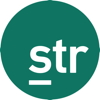

Global Performance
Global occupancy (excluding the U.S) reached another post-pandemic high of 72.4%, 1.5 ppts higher than the previous high achieved a week ago. The week’s occupancy was 5.7ppts higher than the level seen a year ago. ADR increased 9.3% YoY to US$155 with RevPAR of US$112, well above last year (+18.6%).
It was also another record week for the top 10 countries (based on supply) as occupancy grew 1.1 ppts week over week to reach a post-pandemic high of 75.2%, up 7.1ppts versus the comparable week last year. ADR for the top 10 grew 7.4% to US$146, leading to an overall RevPAR of US$110, up 18.7% YoY.
- Among the top 10, the U.K. continued to post the highest global occupancy (84.6%), which was the third highest result of 2023, up slightly, 0.5ppts YoY and 5.2 ppts ahead of the next highest country in the Top 10, Italy (78.2%).
- Mexico was the only country in the top 10 to report a negative RevPAR comparison, resulting from a slight drop in occupancy (-0.3%) but mainly from declining ADR (-17.1%).
- Japan holds on to the highest YoY RevPAR growth at 99.5%, largely driven by ADR (+76.4%) and slightly by occupancy (+14.4ppts).
Outside of the Top 10, five countries had a higher occupancy than the U.K. Ireland took back the top spot (88%, +2.2ppts YoY) followed by Malta (87.6%, +21.7ppts) and Fiji (87.4%, +1.4 ppts). El Salvador also saw strong occupancy (87%) and had the third highest gain (+27ppts). Finally, Singapore at 85.9% was up 10.9ppts YoY.
U.S. Performance
After the normal softness around the Fourth of July, U.S. occupancy rebounded to 72.0%, which was an increase of 10.2 percentage points (ppts) week over week (WoW). That was the highest WoW gain thus far in 2023 and the third highest since March 2020. Occupancy was basically flat (+0.1%) year over year but down nearly 2ppts versus the same week in 2019. Room demand of 28 million rooms was the second best since 2020 with the highest level occurring at the end of July last year. We anticipate the industry will set a weekly, post-pandemic demand record over the next two weeks, which is the peak summer travel period.
Average daily rate (ADR) grew 1.5% year over year (YoY) to US$158, resulting in revenue per available room (RevPAR) of US$115, up 1.6% YoY but below the current rate of inflation (~3%).
The strongest YoY occupancy gains were seen on the weekend (Friday & Saturday), and the strongest ADR growth came on weekdays (Monday-Wednesday).
- Weekend occupancy increased 0.6% while ADR increased 1.3%, less than the 1.5% average for the week.
- Weekday occupancy increased a slight 0.1%, while ADR was up 1.8%.
- Shoulder days (Sunday and Thursday) decreased in occupancy (-0.4%) with a 1.1% increase in ADR.
As we have seen for most of the year, the Top 25 Markets saw better year-over-year comparisons than rest of the country. Further, the Top 25 achieved its highest aggregate occupancy of the year (76.0%), up 0.8%. Occupancy in the remaining markets was 69.9%, down 0.3% YoY.
- Weekly ADR increased 2.3% YoY for the Top 25 Markets, resulting in a RevPAR gain of 3.4%, just above the inflation rate of 3.0%.
- The highest RevPAR growth (+4.9%) for the Top 25 Markets occurred over the weekend as occupancy increased 1.9ppts YoY with a 2.4% ADR gain.
- Weekdays posted modest occupancy gains averaging 0.4ppts (YoY) as ADR growth (+2.5%) matched the weekend increase, resulting in 3.1% RevPAR growth.
- The rest of the country saw ADR increase 0.7% YoY with RevPAR basically flat (+0.3%).
Several Top 25 Markets reported double-digit RevPAR growth YoY, including Denver (+25.9%), Las Vegas (+16.1%), San Diego (+10.8%), and Atlanta (+10.1%). In occupancy, San Diego, Denver, and Las Vegas led the nation (all above 85%) with San Diego at a high of 93.2%. Atlanta and San Diego both reported their highest occupancy of the pandemic-era.
- Denver benefitted from the three-night Taylor Swift tour stop with weekend occupancy of 96.0% and ADR at $241. The Yankees were also in town.
- Seattle just missed the double-digit cut with a 9.3% RevPAR increase on 85.3% occupancy, benefitting from the MLB All-Star game and its surrounding events.
- New York City at 85.7% ranked fifth in occupancy with a relatively modest 5.7% RevPAR increase as ADR was up 1.1%.
Across the rest of the country, Alaska had the nation’s fourth highest occupancy (87.1%) followed by Colorado Springs at 84.5% (perhaps impacted by Taylor Swift’s presence in nearby Denver) and Long Island (benefitting from beach lovers). Two outdoor destinations rounded out the list – Montana (82.3%) and Gatlinburg/Pigeon Forge (82.2%).
Final thoughts
This week was typical as we near the summer travel apex in the U.S. While good, we know that this summer’s growth rates have startled most operators. We believe the U.S. is on solid ground despite the weaker year-over-year gains and that those lower growth rates are a result of normality returning to the industry and due also to the increase in outbound international travel. Forward STAR data is indicating a stronger Fall, which will be welcomed by all. Overall, the industry (U.S. & global) remains in recovery mode with solid summer weeks still ahead.
Looking ahead
U.S. hotel occupancy is expected to remain strong as it reaches the annual peak. ADR and RevPAR will continue to improve modestly while hotels outside of the U.S. will see ongoing benefit from the significant increase in international, especially American travelers. Further out, after reaching its annual peak, we expect U.S. occupancy to trend down each week until the Labor Day holiday week. Past Labor Day, forward bookings in the top U.S. markets are above last year’s levels, indicating strong performance throughout the fall/autumn season.